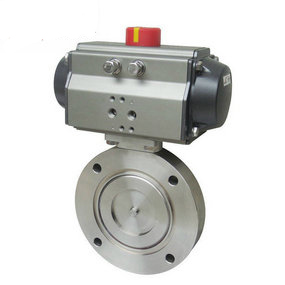How many solenoid valves are required to control the opening and closing of the pneumatic cut-off butterfly valve? 1、 Features of fixed pneumatic ball valve:
1. Double blocking and discharging function: the fixed pneumatic ball valve uses the spring to pre tighten the floating valve seat. No matter the valve is in the fully open or fully closed state, the valve seats at the upstream and downstream sides block the fluid, and the residues in the cavity of the valve body are discharged through the discharge valve.
2. Automatic pressure relief function: in case of abnormal pressure rise caused by the temperature rise of the medium staying in the valve body cavity, it is not necessary to pass through the safety valve, but only the valve seat function can automatically relieve pressure, which is very important to ensure the safety of the valve when delivering liquid medium.
3. Fire safety structure: all valves have fire safety functions, and their design and manufacture comply with API 607 and API 6FA specifications.

Internal structure of pneumatic butterfly valve:
1. Elastic seat sealing structure The elastic seat sealing structure uses an eccentric butterfly plate installed on the valve rod, which has two sides: spherical and conical, and is matched with the elastic seal ring. The seal ring is made of L-shaped and U-shaped, which is consistent with the sealing surface of the butterfly plate. Under the action of medium pressure, the sealing pair produces tiny elastic deformation, thus realizing sealing. The structural form shall be selected according to the nominal diameter and nominal pressure of the valve, and the wall thickness of the seal ring shall be designed according to the pressure bearing force.




